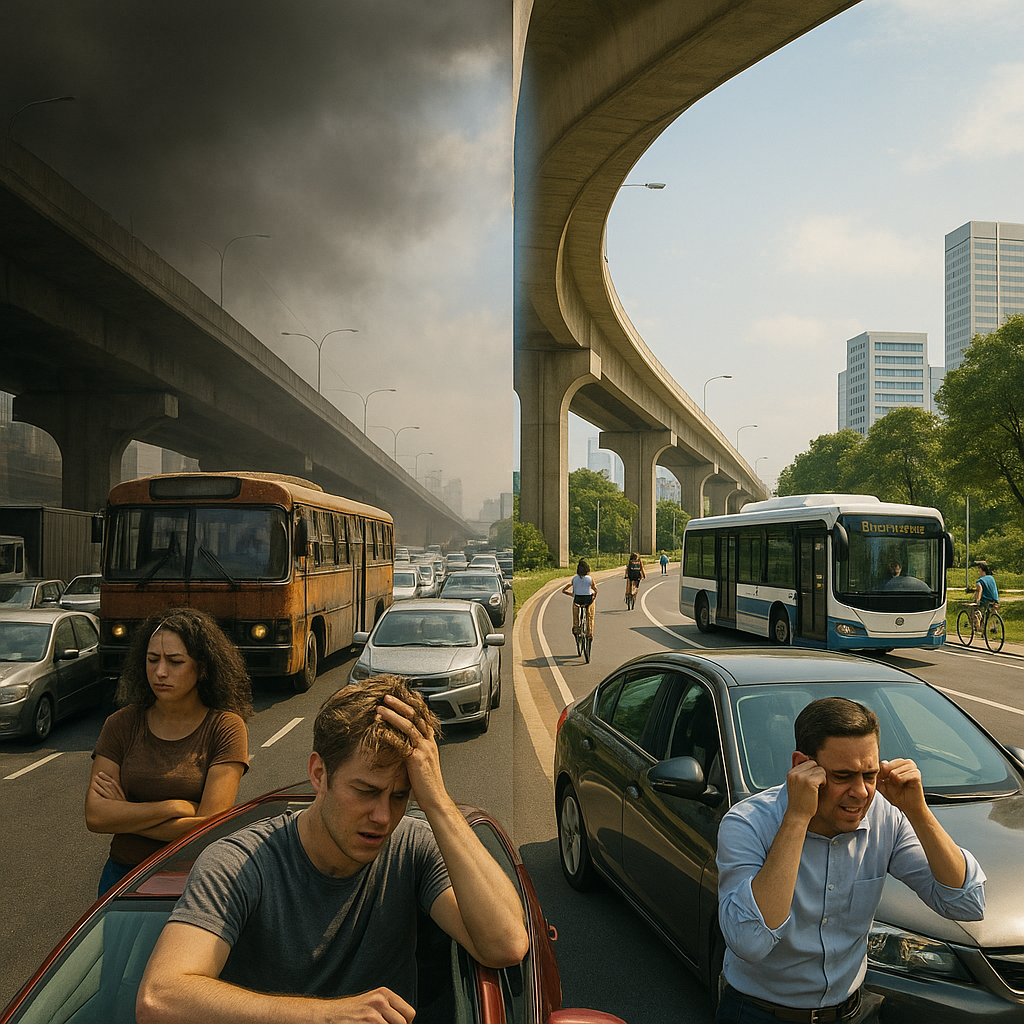Is Building Flyovers Solving Traffic Congestion Problems?

Traffic congestion in urban areas is one of the most obvious and exasperating issues of contemporary cities. With the ever-increasing population, car ownership, and metropolitan expansions, numerous governments and urban planners have opted to construct flyovers as a solution to relieve traffic pressure. Whereas flyovers are designed to disperse traffic by going around congested intersections, it may be worth considering whether they truly address the congestion problem or simply transfer it to another location.
- Why are flyovers constructed?
Flyovers are built to minimise congestion at busy intersections, making the flow of traffic gain speed and making the road more efficient. Flyovers provide a route for through-traffic to move without breaking at traffic lights. Theory assumes that this relieves pressure on the intersection beneath and helps deal with massive volumes of vehicles, particularly during rush hours. Cities that are prone to frequent gridlocks perceive flyovers as fast relief roads to address congestion and react in real time.
- Short-Term Benefits of Flyovers
Initially, the opening of a flyover can be viewed as having a very positive impact. Vehicles that would otherwise be in lengthy queues at roundabouts or traffic lights are now able to move continuously, reducing average speed and saving time. This also leads to lower fuel usage and emissions from stalled engines. Flyovers in busy corridors, like entrance routes to central business districts or principal arterial roads, can introduce visible relief in the flow of traffic and alleviate the exasperation of regular commuters.
Do Flyovers Offer Relief in the Long Run?
Though they have an instant benefit, flyovers in the long run are frequently questionable. In most situations, congestion that is eased temporarily by a flyover recurs after some months or years. This is partly because of something called induced demand, in which adding capacity to the road leads to more cars on the road. When traffic conditions get better, more people are motivated to drive, and again, traffic increases, usually above the initial traffic level before constructing the flyover.
- Shifting the Bottleneck, Not Solving It
Flyovers are typically short and limited in reach, crossing just one focal junction or road section. While they can potentially speed up traffic in the zone, the flow must still merge with the regular road network. This introduces new bottlenecks at the flyover entrance and exit. Thus, the traffic problem does not disappear—it simply moves to another location, often causing more congestion in surrounding intersections or avenues.
- Effect on Urban Planning and Public Transport
When the city invests heavily in flyovers, the energies and funds elsewhere are drawn away from sustainable long-term options like public transport. Rather than enhancing bus, metro, or railway systems, there is emphasis on fitting in more private vehicles. This creates a car-dependent urban plan, which further enhances pollution, road crashes, and degradation of the environment. Flyovers also destroy neighbourhoods by cutting through communities, curbing walkability, and adversely impacting the quality of life for pedestrians and cyclists.
- Environmental and Aesthetic Concerns
Flyovers, as useful as they may be, have detrimental effects on the urban landscape. They help create the urban heat island effect because they are made of concrete, further contribute to air and noise pollution in the surrounding environment, and visually clutter city landscapes. In urban areas where they are most needed, they also reduce access to natural light and become hazardous, dark areas under the overpasses. Their existence tends to ruin the liability and aesthetic appeal of urban areas.
- What Are Better Alternatives?
Cities that have successfully tackled traffic jams have shifted from just constructing flyovers. Rather, they invest in comprehensive transport systems comprising metro networks, bus lanes, last-mile connectivity solutions, and non-motorised transport such as cycling and walking routes. They also implement smart traffic management technologies, real-time traffic information, and road pricing models such as congestion charges to manage vehicle numbers.
Instead of concentrating solely on speeding vehicles, contemporary cities are more concerned with transporting more people with efficiency. They promote behavioural change through improved infrastructure and services that make public transport more appealing compared to driving private cars.
Conclusion:
Flyovers provide temporary relief but are not a permanent solution for congestion. They tend to promote more vehicle usage, relocate bottlenecks, and squander precious urban real estate. Arena Softwares advocates for intelligent, comprehensive transport planning for sustainable mobility. True solutions are public transport, pedestrian-friendly cities, and smart traffic systems. Get in touch with Arena Softwares for more information.
